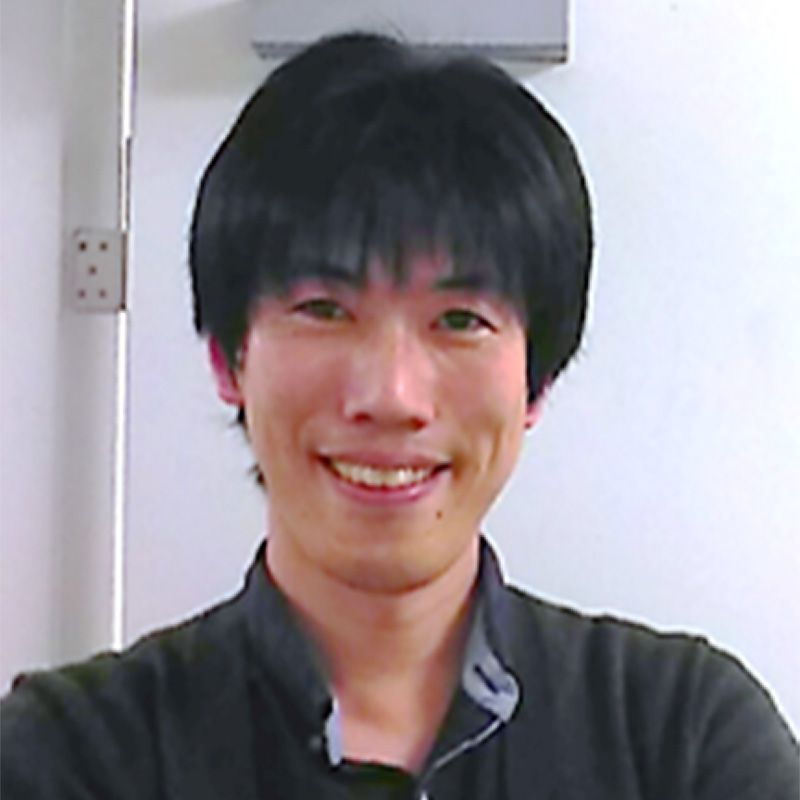KONDOH Daisuke Associate Professor
ThemeDistribution and changing patterns of glycosylation in the brain, and phylogenetic approach of the olfactory system among vertebrates.
| Field | Comparative anatomy, Histology, Neuroscience, Glycobiology, Molecular biology |
| Keyword | Brain, Sugar chains, Olfaction, Pheromone, Mammals, Birds, Reptiles, Amphibians, Fishes, Histochemistry, Ultramicroscopy, Immunostain, Lectin stain |
Introduction
【My first research subject: Distribution and change analysis of glycan structures in the mouse brain】
Today, although we have a huge amount of knowledge about gene and protein expression, there are many questions regarding the mechanism of processing in the brain. One of the main reason, we focus the glycans, which are recognized as the “third chain of life” following amino acid and peptide chains. Glycans are attached to proteins to mediate functions of the proteins, and plasticity of neurons is affected by glycans in the brain. We previously found diurnal and age-related variations of the amount of α1-2Fuc glycan structure in the olfactory center. Now, we investigate the detailed distribution and changes of glycan structures to reveal the physiological meanings.
Figure 1: Age-related change of positive ratio of a1-2Fuc-positive glomeruli in mouse olfactory bulbs (Arrows, intensely-positive; arrowheads, moderately-positive; *negative glomeruli)
【My second research subject: Phylogenetic research of the olfactory system among vertebrates】
Vertebrates depend on the olfaction to search the external environment. The olfactory system of most tetrapods comprises the main olfactory and vomeronasal systems, and a vomeronasal organ (VNO) generally processes various species-specific chemicals (pheromones), although some species including humans lack this organ. However, we recently understand that these two systems are not clearly discriminated and control the same behaviors in a coordinated manner. Because we do not have and imagine vomeronasal perceptions, this system is very interesting to understand animal behaviors in detail. And then, we investigate how developed the vomeronasal system in various vertebrate species is by using morphological and histochemical techniques. Now, we focus the olfactory system of sea turtles.
(Press release: Olfaction of hippopotamus http://www.obihiro.ac.jp/press/29/17ronnbunn_konndou_29.pdf)
(Press release: Olfaction of giraffe http://www.obihiro.ac.jp/press/28/33kondohronbun_28.pdf)
Figure 2: Histological image of giraffe vomeronasal organ
List of current research topics
- Distribution analysis of VVA-positive structures in the mouse brain
- Diurnal and aging changes of a1-2Fuc glycan in the mouse brain
- Morphological and histochemical research of mammalian olfactory system
- Morphological and histochemical research of reptilian olfactory system (especially sea turtles)
- Effect of anesthesia in reptiles (especially lizards)
| Academic degree | Ph.D. |
| License | D.V.M. |
| Self introduction |
I graduated from Iwate University, and I love IWATE! When I was a graduate student, my supervisor gave me a research topic focused on the glycans in the olfactory organ of snakes, which connects to my present interests. Thanks to students and researchers of the same generation, I get stimulated and always have a good time. I like to go to the hot springs, so please tell me some nice ONSEN around the world. |
| Room address | General Research Building 1 |
| Room number | S1102-02 |
| Mail address | kondoh-d  obihiro.ac.jp
obihiro.ac.jp |
Belongs
Research Department/Department of Veterinary Medicine/Division of Veterinary Sciences/Section of Anatomy and PathologyAgritech and Livestock Innovation Hub/Animal Production Research Promotion Division| Related industries | Veterinary medicine, Animal husbandry, Neuroscience, Wildlife |
| Affiliated academic society | The Japanese Society of Veterinary Science, The Japanese Association of Anatomists, The Japanese Association for the Study of Taste and Smell |
| Academic background | 2010: D.V.M., Department of Agriculture, Iwate University 2013: Ph.D., Gifu University United Graduate School of Veterinary Sciences 2013-2014: Researcher, National Institute of Advanced Industrial Science and Technology (AIST), Japan 2014-Present: Assistant professor, Obihiro University of Agriculture and Veterinary Medicine |







